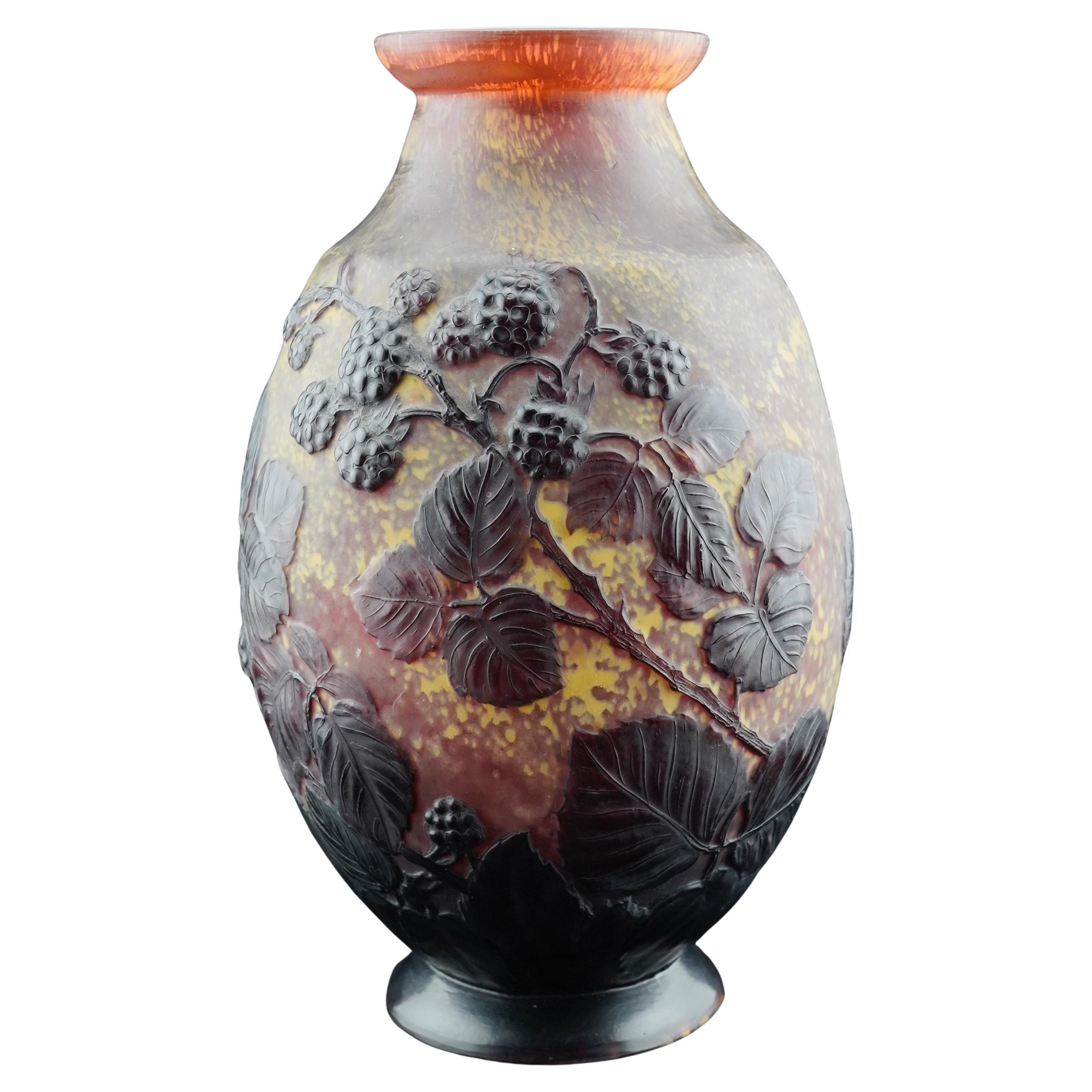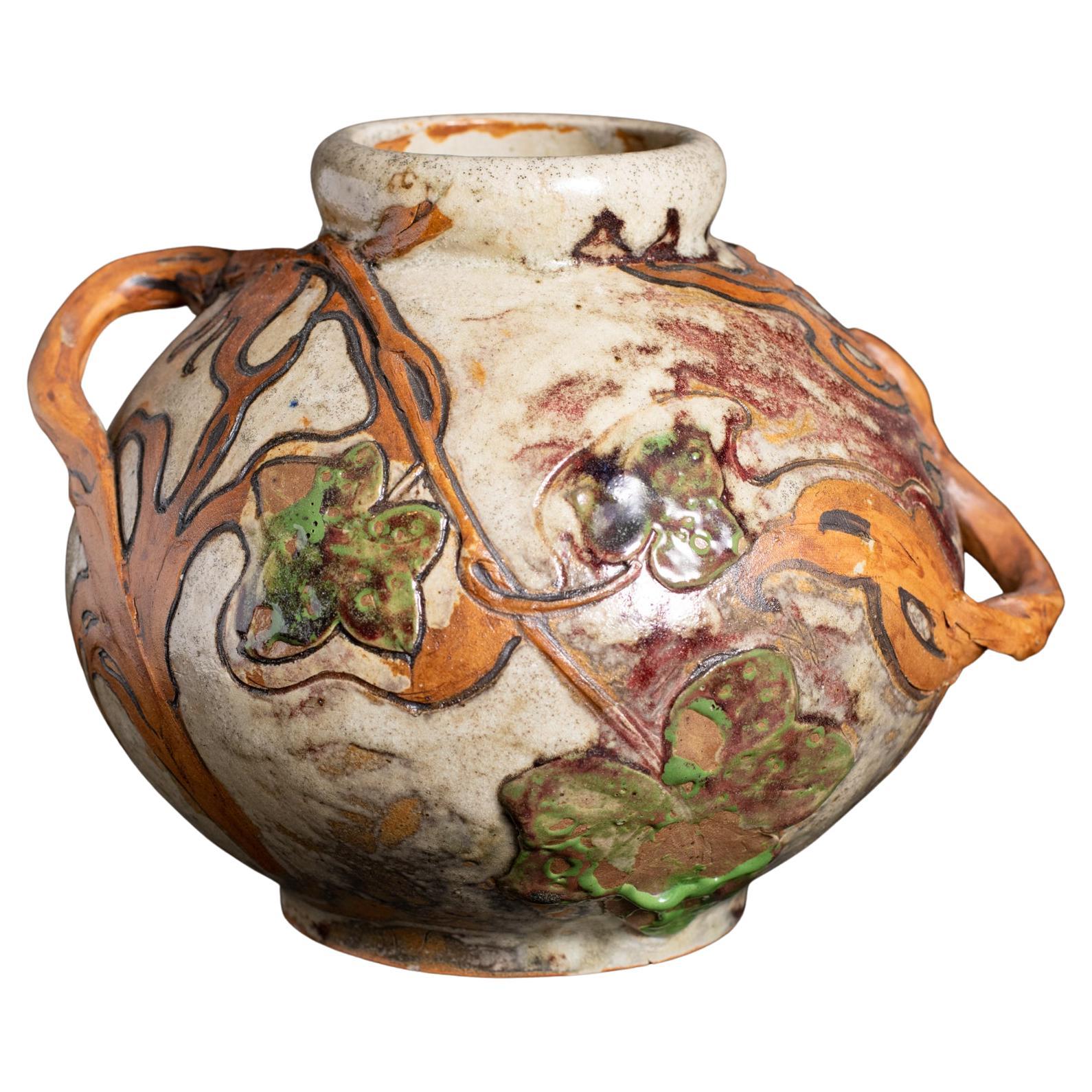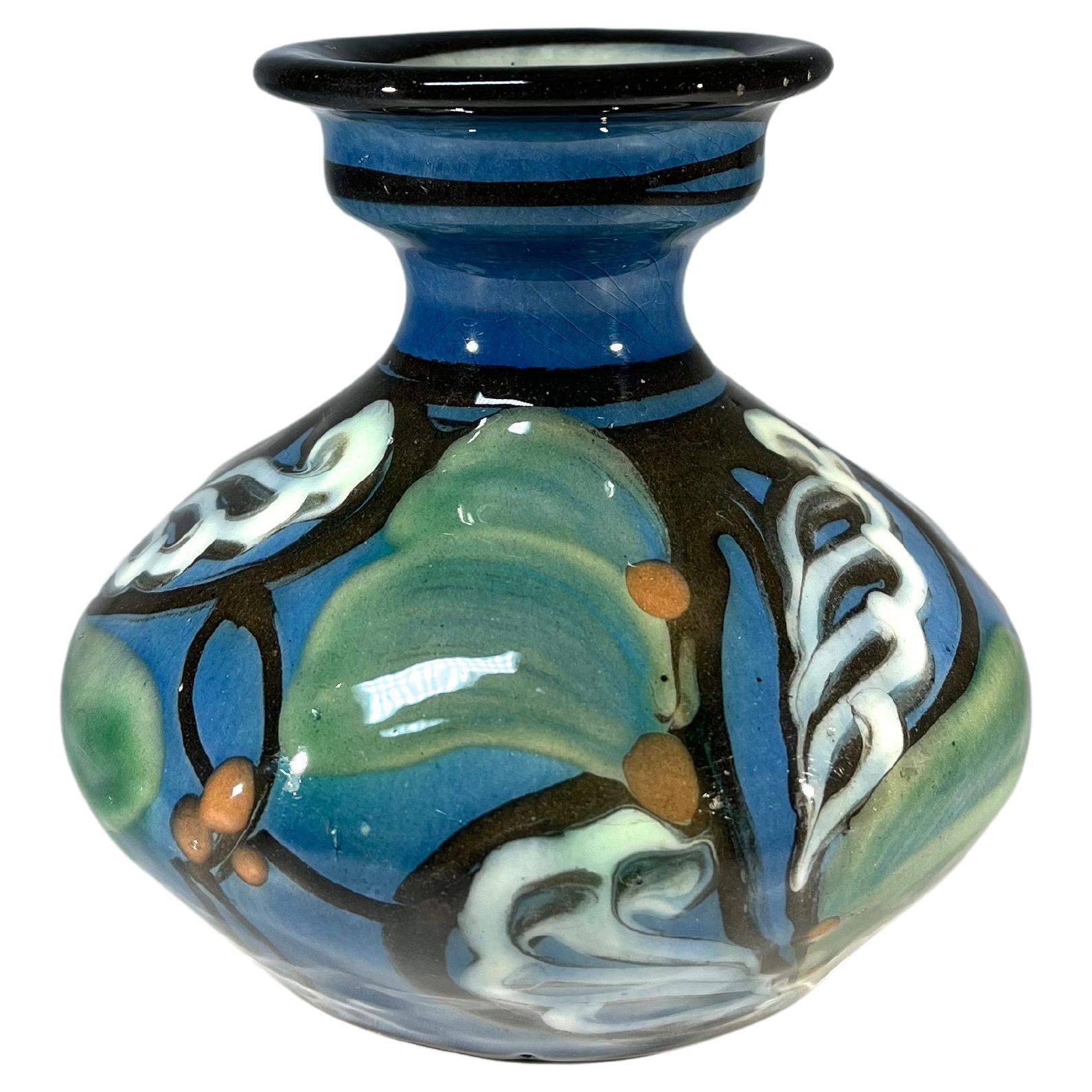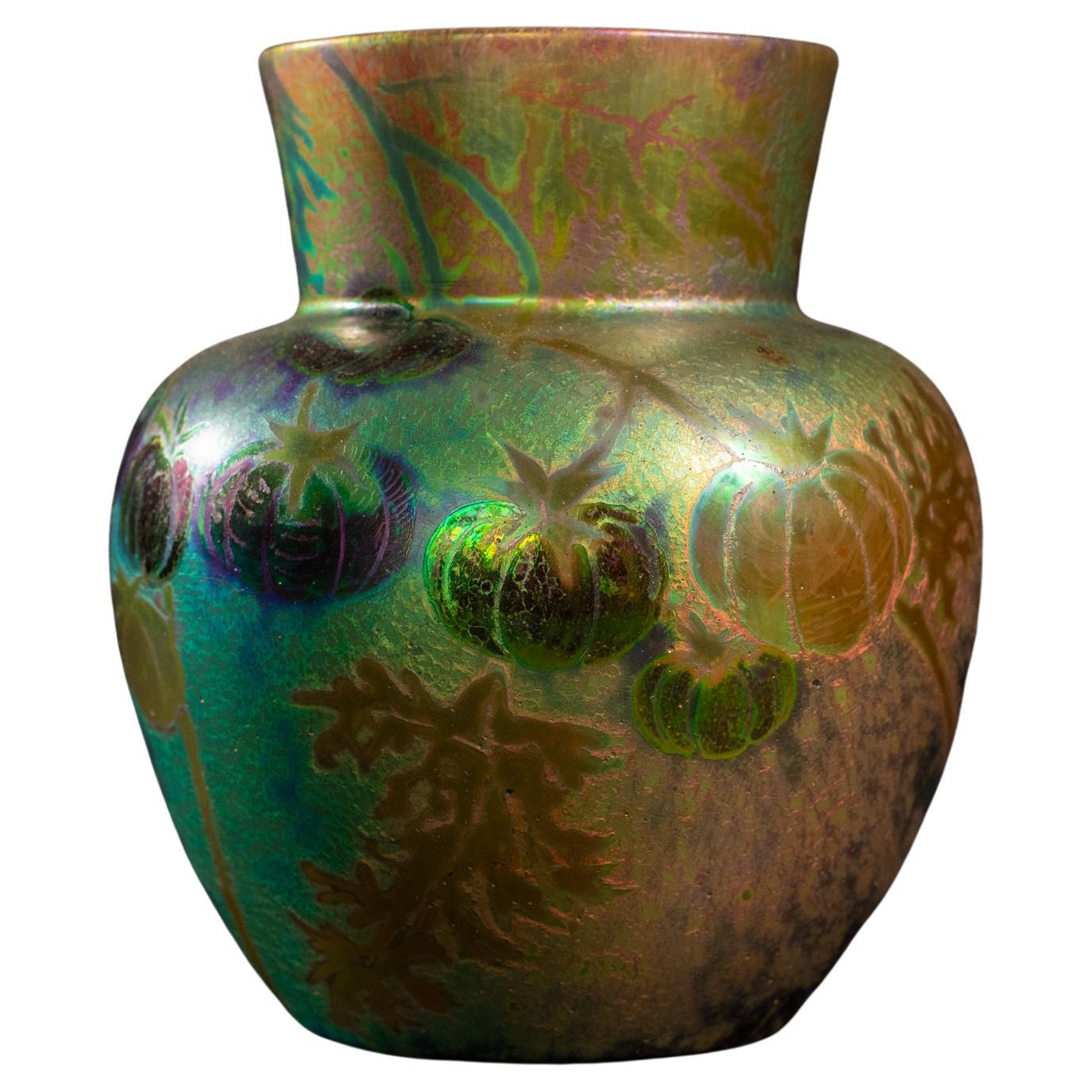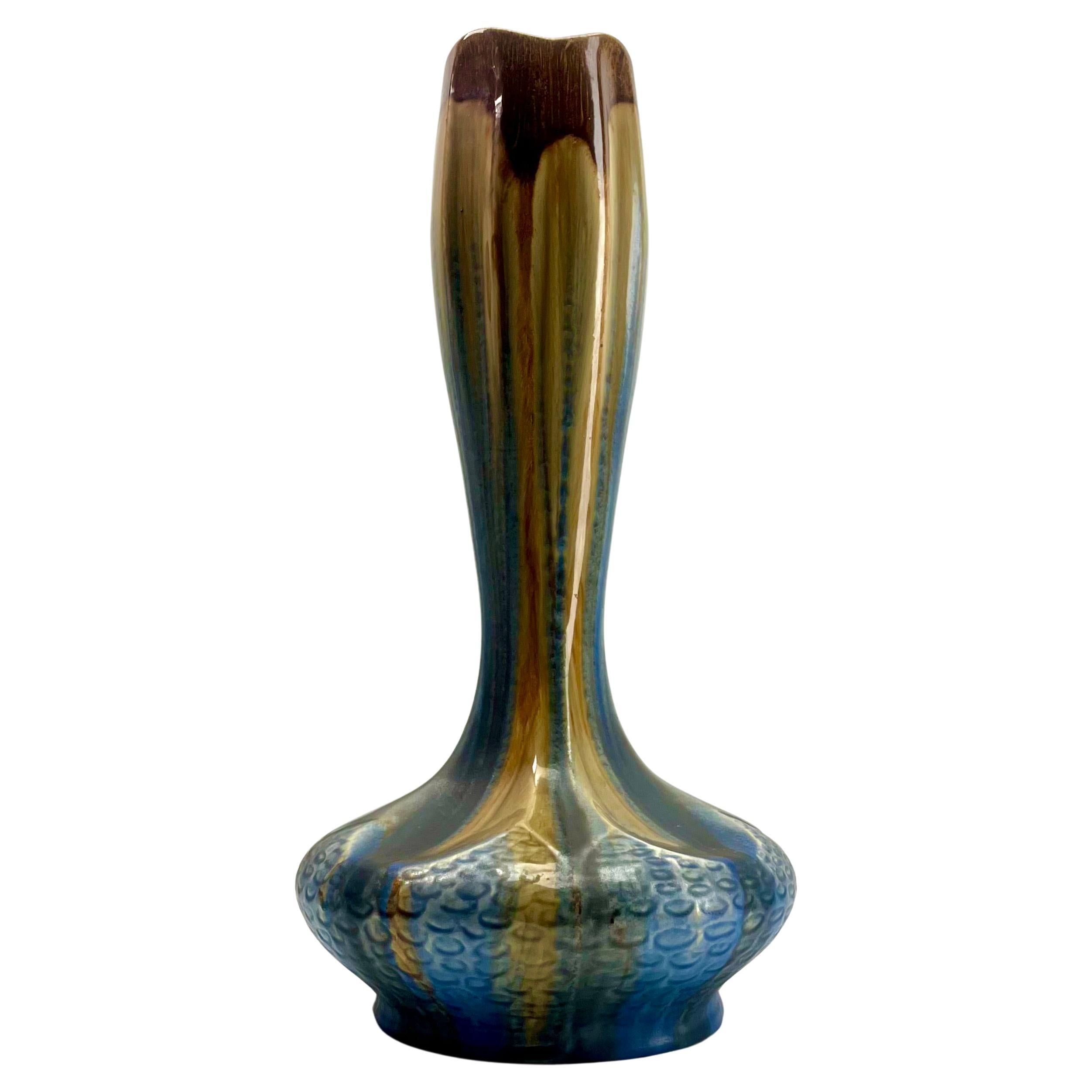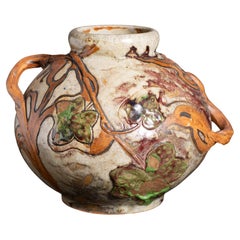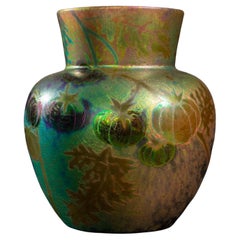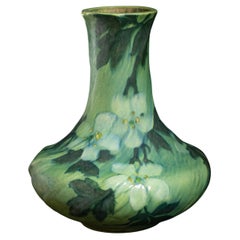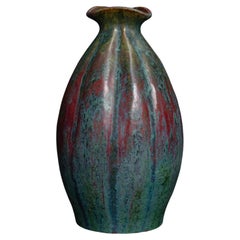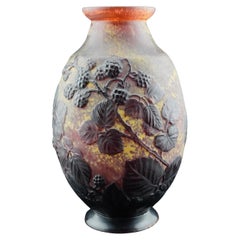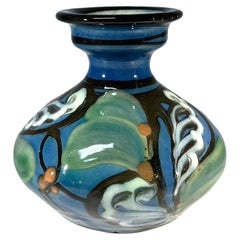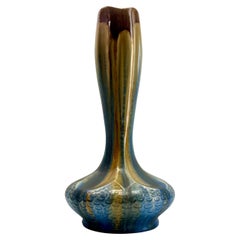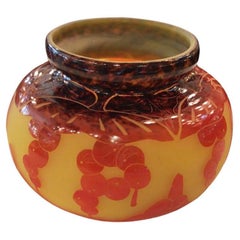Items Similar to Art Nouveau Berries & Vines Vase by Henri-Leon Charles Robalbhen
Want more images or videos?
Request additional images or videos from the seller
1 of 12
Art Nouveau Berries & Vines Vase by Henri-Leon Charles Robalbhen
$7,800
£5,909.98
€6,781.23
CA$10,975.86
A$12,065.49
CHF 6,341.07
MX$146,518.98
NOK 79,103.22
SEK 74,944.74
DKK 50,610.06
About the Item
This piece is a unique, one of a kind piece, not a mass-produced factory piece.
- Creator:Charles Robalbhen (Artist)
- Dimensions:Height: 5.5 in (13.97 cm)Width: 9 in (22.86 cm)Depth: 9 in (22.86 cm)
- Style:Art Nouveau (Of the Period)
- Materials and Techniques:Stoneware,Glazed
- Place of Origin:
- Period:1900-1909
- Date of Manufacture:c. 1900
- Condition:Hairline firing crack on bottom, inherent in the making.
- Seller Location:Chicago, US
- Reference Number:1stDibs: LU7300235997712
About the Seller
5.0
Vetted Professional Seller
Every seller passes strict standards for authenticity and reliability
1stDibs seller since 2022
18 sales on 1stDibs
Typical response time: 9 hours
- ShippingRetrieving quote...Shipping from: Chicago, US
- Return Policy
Authenticity Guarantee
In the unlikely event there’s an issue with an item’s authenticity, contact us within 1 year for a full refund. DetailsMoney-Back Guarantee
If your item is not as described, is damaged in transit, or does not arrive, contact us within 7 days for a full refund. Details24-Hour Cancellation
You have a 24-hour grace period in which to reconsider your purchase, with no questions asked.Vetted Professional Sellers
Our world-class sellers must adhere to strict standards for service and quality, maintaining the integrity of our listings.Price-Match Guarantee
If you find that a seller listed the same item for a lower price elsewhere, we’ll match it.Trusted Global Delivery
Our best-in-class carrier network provides specialized shipping options worldwide, including custom delivery.More From This Seller
View AllArt Nouveau Stoneware Vitis Vase by Edmond Lachenal and Émile Decoeur
By Émile Decoeur, Edmond Lachenal
Located in Chicago, US
The finest examples of vases produced in collaboration between Edmond Lachenal and Emile Decoeur date from 1901-1904. This vase, with the word “original” marked on its underside, ind...
Category
Antique Early 1900s French Art Nouveau Vases
Materials
Stoneware
Iridescent Tomato Art Nouveau Vase by Clement Massier
By Clement Massier
Located in Chicago, US
An encounter with Massier’s luster-glazed ceramics is an embarkation on an acid-colored trip, the sort of exploration which inspires deep reflection and requires transparency. Clemen...
Category
Antique Early 1900s French Art Nouveau Vases
Materials
Earthenware
Art Nouveau Earthenware Floral Vase by Edmond Lachenal
By Edmond Lachenal
Located in Chicago, US
EDMOND LACHENAL (1855-1948)
One of France’s most influential ceramists, Edmond Lachenal contributed significantly to the development of Art Nouveau. His poor beginnings in Paris le...
Category
Antique 1890s French Art Nouveau Vases
Materials
Earthenware
Art Nouveau Stoneware Gourd Vase Pierre-Adrien Dalpayrat
By Pierre-Adrien Dalpayrat
Located in Chicago, US
PIERRE-ADRIEN DALPAYRAT (1844-1910) After working nearly half his life as an itinerant faience painter and directing production for commercial porcelain manufacturers, Dalpayrat’s ey...
Category
Vintage 1910s French Art Nouveau Vases
Materials
Stoneware
Footed Vase with Grape Vine Motif by RStK Amphora
By Eduard Stellmacher, Reissner Stellmacher & Kessel
Located in Chicago, US
Model #3425
Highly stylized vase with grape vine motif and secessionist handles.
Paul Dachsel was the son-in-law of Alfred Stellmacher, the founder of Amphora Pottery company in Tu...
Category
Antique 1890s Austrian Art Nouveau Vases
Materials
Earthenware, Glass
Art Nouveau Orchid Cabinet Vase by Galileo Chini
By Galileo Chini
Located in Chicago, US
Orchid Cabinet Vase by Galileo Chini.
Category
Antique 1890s French Art Nouveau Jars
Materials
Earthenware
You May Also Like
Galle Mold Blown Berry Vase
By Gallé
Located in Sarasota, FL
Galle mold blown ( souffle) vase. Dark brown over reddish, yellow and brown base. Sharp definition of leaves and berries.
Category
Early 20th Century French Art Nouveau Vases
Materials
Glass
Antique Art Nouveau Stylised Ceramic Vase By Horsens Danico, Denmark c1920
By Danico Pottery
Located in Rothley, Leicestershire
Art nouveau in design and era, a fabulously glazed ceramic vase by Horsens Danico Denmark
A super little vase to collect
Circa 1920's
Signed Danico, 221 Denmark
Height 4.25 inch, Dia...
Category
Vintage 1920s Danish Art Nouveau Vases
Materials
Ceramic
Art Nouveau Large Vase Soliflore Handmade and Hand Glazed Details 1930s
By Faienceries Sarreguemines
Located in Verviers, BE
Brilliant handmade hand-glazed Art Nouveau Soliflore Vase, 1930.
Handmade and hand-glazed in brilliant colored details.
Made in Belgium
Art Nouveau period 1930 fine quality.
The pi...
Category
Vintage 1930s Belgian Art Nouveau Planters, Cachepots and Jardinières
Materials
Ceramic
Vase, Sign: Le Verre Francais (Currant bushes), Style: Art Nouveau, Liberty
By Le Verre Francais
Located in Ciudad Autónoma Buenos Aires, C
Vase Sign: Le Verre Francais
acid worked
Le Verre cameo glass was a separate line of art glass designed by Charles Schneider. Its production was made at the same time as the Schneid...
Category
Vintage 1920s French Art Nouveau Glass
Materials
Art Glass
Vase (Decoration Azurretes), Sign: Le Verre Francais, Style: Art Nouveau , 1923
By Le Verre Francais
Located in Ciudad Autónoma Buenos Aires, C
Vase Sign: Le Verre Francais
acid worked
Le Verre cameo glass was a separate line of art glass designed by Charles Schneider. Its production was made at the same time as the Schneid...
Category
Vintage 1920s French Art Nouveau Glass
Materials
Art Glass
Art Nouveau Faience Handled Vase with Drip Glaze, Belgium
By Wasmuel Majolica, Thulin, Denbac
Located in Clifton Springs, NY
Striking large ceramic vase features the organic, rounded shape with 3 curved, free-flowing decorative handles. It is decorated in characteristic Belgian Art Nouveau style with the u...
Category
Early 20th Century Belgian Art Nouveau Vases
Materials
Ceramic, Faience, Majolica, Pottery
More Ways To Browse
Antique Blue Stoneware
Berry Vase
Talavera De La Reina
Vase 1922
1915 Vase
1980s Blown Glass Vase
24 Karat Gold Vase
Antique Old Paris Vases
Arabic Inscription
Art Nouveau Bohemia
Austrian Amphora Vase
Belly Vase
Dragon Vase Pair
Floor Vases Hand Blown Glass
Floral Vase With 2 Handles
Fluted Glass Vases
Green Lava
Handkerchief Murano Glass
